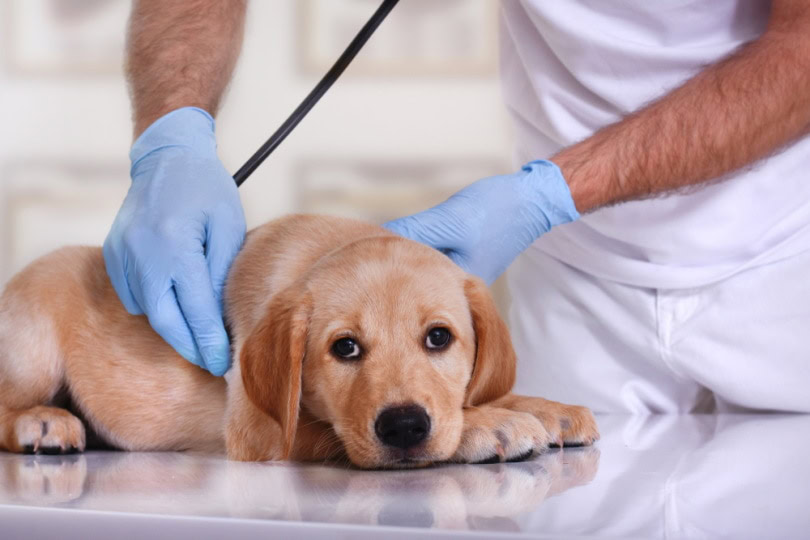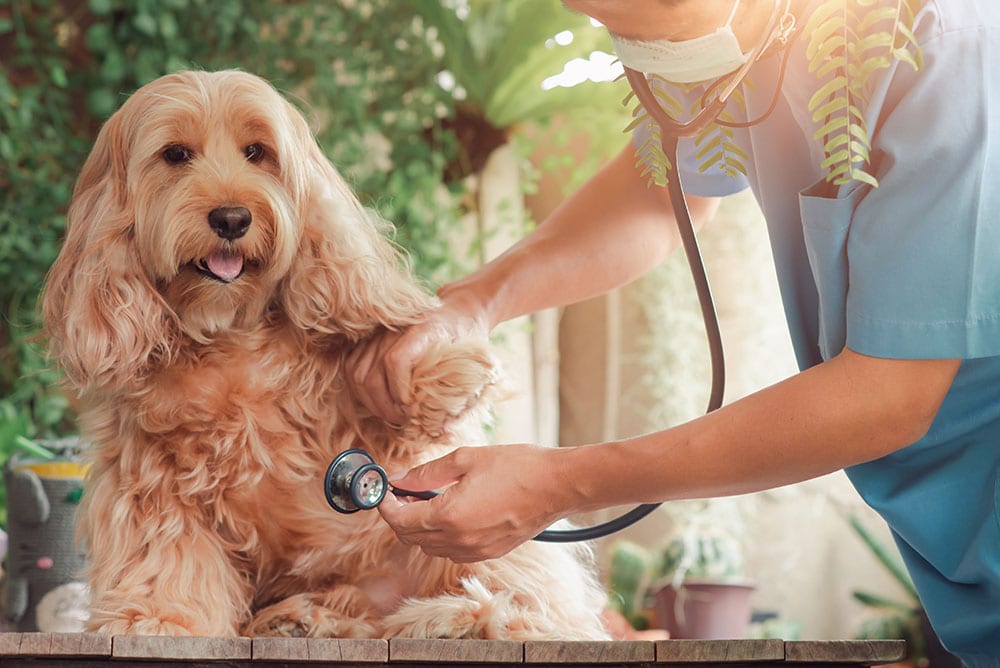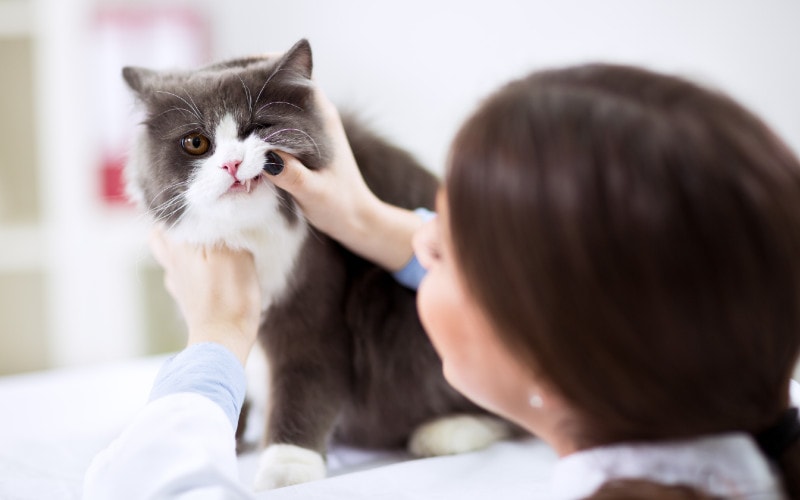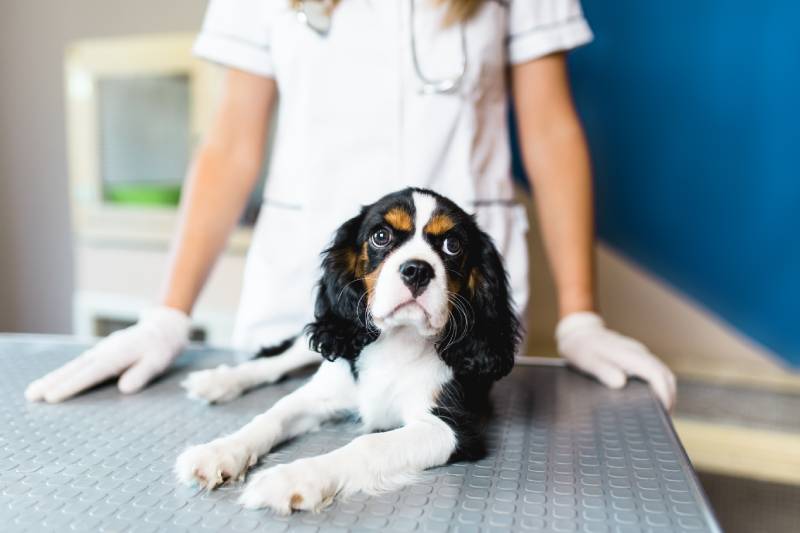VET APPROVED

The information is current and up-to-date in accordance with the latest veterinarian research.
Learn more »Click to Skip Ahead
When your pet seems perfectly healthy, you may wonder if an annual physical exam is even necessary. Every pet owner has wondered about the importance of yearly pet exams since they’re always encouraged by vets and pet specialists.
According to current statistics, interest in adopting or buying a pet has increased exponentially, but the number of pets receiving veterinary care is declining. The American Animal Hospital Association (AAHA)1 and the American Veterinary Medical Association (AVMA) state that pets are dealing with preventable diseases now more than ever.
Even if your pet seems perfectly healthy, it’s crucial to have them examined by a vet at least once a year. Most pets, especially cats, are good at hiding illnesses and pain, so there may be something wrong with your pet before you realize it.
Keep reading to learn about how annual pet exams can help you prevent these illnesses at the right time.

The 3 Stages: What Is an Annual Pet Welness Exam?
An annual pet wellness exam consists of three stages: checking the pet’s history, conducting a physical exam, and discussing follow-up diagnostic tests if necessary. Here’s what a yearly pet exam can look like at the vet.
1. History
In this part of the annual pet exam, the vet asks the pet owner about the pet’s behavior, diet, exercise schedule, housing, previous vaccine history, medical problems, supplements, and medication. You may also need to provide information about the pet’s appetite, thirst, energy levels, and elimination patterns.
If you have any concerns about pain, diarrhea, or vomiting, it’s essential to let your vet know. The owner is responsible for remembering and relaying all such information since the pet can’t verbalize what they’re feeling.
All pets, especially cats, are great at hiding their diseases and pain, so you’ll need to keep an eye out for subtle changes and details. Then, you may report them to your vet since they can be pretty insightful.

2. Physical Exam
The physical exam will require the vet to evaluate your pet from head to toe. They’ll typically start with the head. Looking at their ears to check for foul odors or signs of infection, while the eyes may display signs of visual deficits, infection, cataracts, or inflammation.
Then, the vet assesses the nose for signs of nasal discharge or crusting in the area. Meanwhile, the oral cavity can show signs of dental diseases, such as infected or fractured teeth, along with painful or red gums or oral masses.
Once they’re done evaluating the head, they will check for painful or enlarged lymph nodes, which can expand due to cancer, inflammation, or infection. The vet will also listen closely for unusual sounds from the heart and lungs.
Abnormal heart sounds can indicate the presence of heart diseases, such as cardiac arrhythmias or heart murmurs. Gently palpating the abdomen will help them ensure the pet is not in pain and has no obvious masses.
This can also help them discover enlarged spleens or livers or abnormal kidney sizes. Finally, they will discuss the pet’s muscle mass, which can indicate decreased mobility due to pain or some endocrine diseases.
The vet will examine the pet’s skin, spine, perianal area, genitals, and will finish off the physical exam with a few other assessments, depending on the pet.
3. Diagnostic Tests
Checking the pet’s history and conducting a physical exam can help the vet determine whether your pet is healthy with no abnormalities in their exam. If that’s the case, they’ll recommend any necessary vaccinations or routine tests, such as one for heartworm disease or fecal parasites.
If these tests are required, they’ll typically perform them in the same session. This is also a good time to refill any medications your pet may be on. Some baseline lab work or blood pressure measurement will also be necessary for older pets that are still doing well clinically.
This might result in the discovery of diseases the owner may not have noticed. Since pets cannot talk, it’s crucial to pay extra attention to them when they exhibit the simplest signs of pain or discomfort.


Importance of an Annual Pet Exam
It’s crucial to make an annual trip to the vet, as missing the physical exam could mean the difference between diagnosing a tumor in its early stages or an advanced one that has already spread. This physical exam ensures that your pet’s overall health is precisely how it should be, since they don’t have the communication skills to verbalize their pain or illness.
Especially in the case of cats, they’ll do their best to hide their discomfort and pain, only showcasing their illness when they can’t mask it any longer. If you don’t notice that your pet is sick, don’t worry about being a bad owner, as it’s their natural instinct to hide vulnerability.
Additionally, pets age much faster than humans, and significant changes in their health can occur over the course of a year. Although it’s not entirely accurate, it is said that 1 year of a pet’s life equals 7 years of ours. While an average person won’t be able to detect these changes, vets are trained to pick up subtle differences during the physical exam.
Recommended Health Exams for Your Pet
Here are some conditions that we recommend checking on your pet every year to prevent potential health risks in different parts of their body.
| Location in the Body | Potential Health Risk | Possible Results |
| Skin | Allergies, mites, ear infections, ticks, and lumps | Hair loss, hearing loss, and infections |
| Eyes and Vision | Cataracts, dry eyes, corneal ulcers, and glaucoma | Pain, loss of an eye, and progressive blindness |
| Teeth and Mouth | Gingivitis, periodontal disease, and oral cancer |
Oral pain, tooth loss, tooth abscesses, cancer progression, and systemic infection
|
| Heart and Lungs | Heart murmurs, irregular heart rhythms, heartworm disease, bronchitis, and leaky heart valves |
Poor circulation, fluid buildup, congestive heart failure, sudden death, and pneumonia
|
| Kidney | Acute and chronic kidney diseases, kidney stones, and kidney infections |
Kidney damage, high blood pressure, kidney failure, blindness, anemia, and death
|
| Liver | Cancer, inflammatory liver disease |
Anemia, liver failure, jaundice, cancer progression, bleeding disorder, and death
|
| Glands, Endocrine | Diabetes, Cushing’s syndrome, Addison’s disease, and hypothyroidism | Cataracts, hair and coat changes, blindness, skin infections, and hair loss |
| Joints and Bones | Arthritis, luxating patella, elbow and hip dysplasia, and cancer | Reduced mobility, paralysis, pain, and progressive disease |

What to Expect From an Annual Pet Exam
There are a few different kinds of annual pet exams, so you can expect different things. For example, a complete physical exam will evaluate the pet comprehensively. That includes checking the pet’s temperature, weighing them, and assessing them from head to toe.
The vet will check the pet’s lungs, heart, paws, abdomen, oral cavity, gums, teeth, nose, ears, eyes, fur, and skin. They’ll also perform vaccinations that can help fight common diseases in pets and build essential immunities, but it can vary for each pet.
The vet can determine which vaccine is best for your pet depending on their age, lifestyle, and activities. Additionally, they may recommend an annual parasitic disease check every time you visit to check for various parasites and ensure that your pet doesn’t have heartworm disease or Lyme disease.
The annual heartworm test can ensure that your pet doesn’t have this dangerous disease. The vet will also help you treat flea or tick infestations in your pets and give you a monthly preventative for the future.
Finally, senior pets may be subject to a comprehensive semi-annual exam, which requires more in-depth evaluations. That includes dental cases, blood work, blood pressure checks, and specified checks for diseases more commonly found in older pets.

Conclusion
If you miss your pet’s annual exams, you can put their health at risk, as many conditions, such as skin infections, allergies, arthritis, or dental disease can worsen without early intervention Preventive care is essential, as routine check-ups allow vets to detect and manage potential health issues before they become serious.
More severe problems like diabetes , renal disease, and thyroid disorders often show subtle or no symptoms in the early stages, making them difficult to identify without a professional evaluation. By prioritizing annual exams, you give your pet the best chance at a longer, healthier life.
Featured Image Credit: hedgehog94, Shutterstock










